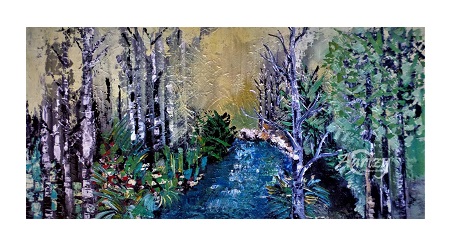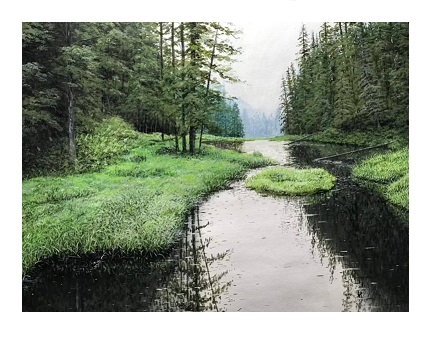It is always exciting to paint landscapes or places. You get to
paint it the way it is and show people the way you want them to see it. Landscape paintings are a great subject for beginners who are just starting out with
painting. But there are only a few who actually master this art. Through this
article, we explore some tips for both the amateur and experienced artists
Simplify the clutter
On a painting, it is important to emphasize certain areas or focal points and leave the rest to the imagination. There are several ways to highlight these areas, for example;
Use a palette knife to add texture and edges

The palette knife is used to add texture and crisp edges on a painting. This technique helps to create a unique effect. Some of the best uses for the palette knife in landscape painting are;
Experts say the palette knife is best used in combination with the paint brush.
Give the illusion of
numbers
In landscape paintings, there will be instances where it is better
to give an illusion of numbers rather than trying to recreate every individual
object. For example, if you are painting trees, it will be impossible to paint
every tree. Therefore, one should paint the general shapes and tones of the
forest and give detail of just a few. This will give the look of a forest.
Don't include everything
in the painting
You are not obliged to include everything you see in the landscape
into a painting. You have the freedom to choose. Include the strong elements
which characterize the particular landscape. You can use the landscape as a
reference and make it your own.
Create subtle variations
with a limited color palette
A problem faced by many beginners, is that there is very little
variance between colors when painting a landscape. Therefore, it may lack depth
and seem two dimensional. Often, landscape paintings do not have complex
colors, but are a combination of greens, blues and earthy tones. In order to
ensure paintings do not become monotonous, subtle variations in colors within the palette needs to be created.
With that being said, one must remember that nature rarely gives us a dull picture to paint!

Embracing Imperfections
Imperfections are a part of nature. Learning to accept them are what is most important. When painting landscapes, there is no requirement to be accurate with values or colors, but this does not give you leverage to be sloppy. You need to remember that it is not necessary to create the perfect rendition of the landscape but your best version!
Everything
is shapes, lines and colors
Almost everything you paint are elements. You should try to think of these as shapes rather than clouds, trees or water. If you do so, then you will be far more successful to have a painting which looks like your landscape. If instead you try to paint clouds, trees and water, then you will end up painting from your imagination rather than what is actually there.
Incorporate
timed sketches to improve judgment.
One of the best ways to improve your landscape
painting skills is to incorporate quick sketches into your schedule. It can be
from a photograph or a natural outdoor setting. It is better to keep the canvas
small and finish it within a short period of time. The purpose of this is to
learn to paint more instinctively and to learn to judge values and colors.
Use black and white or monotone colors to increase your understanding of the value
If you struggle with finding the right balance of color on a landscape painting, you may want to consider deviating from colors and painting in black and white or monotone colors for a while. This will help you judge how to lighten or darken the landscape.
Use your
imagination
If you think rearranging elements on the landscape will have a stronger painting composition, then please do so. This will not apply if you are already painting a famous or a readily identifiable scene. The majority of landscapes provide an opportunity to capture the essence of a landscape.
Manesha Peiris (2021)